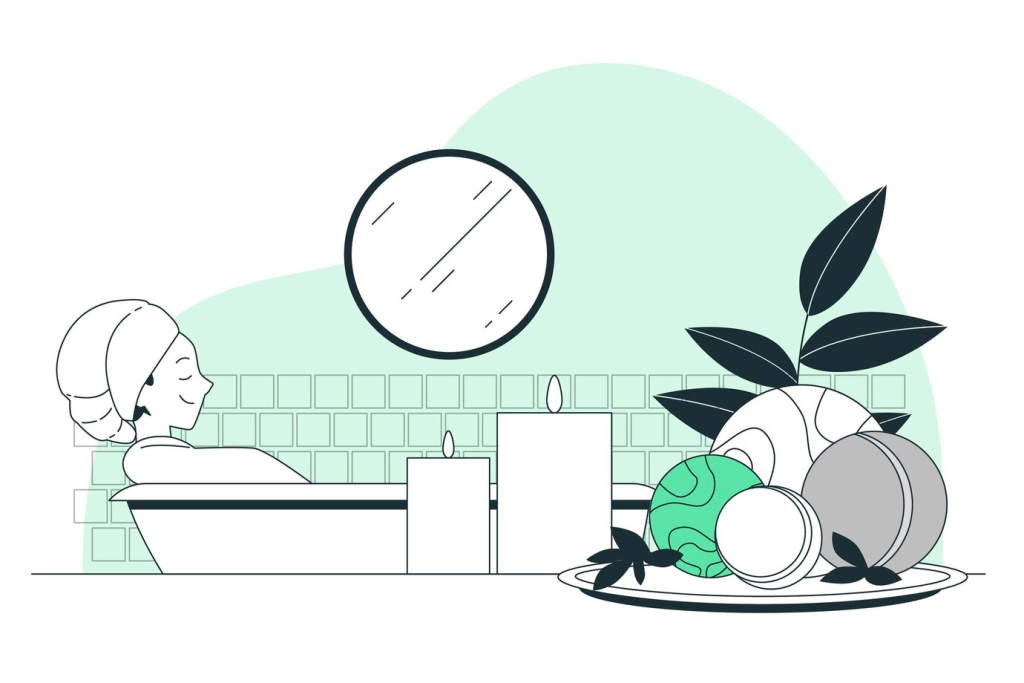Introduction
Creating a sustainable bathroom is a practical way to reduce your environmental footprint while maintaining a stylish and functional space. By focusing on water conservation, eco-friendly materials, and waste reduction, you can transform your bathroom into a green haven. This guide offers tips for creating a sustainable bathroom, providing easy, actionable steps to make your daily routines kinder to the planet.

1. Install Water-Saving Fixtures
Reducing water use is key to a sustainable bathroom, and modern fixtures make it simple without sacrificing performance.
Upgrade to Low-Flow Showerheads
Choose a low-flow showerhead, like one with a WaterSense label, which uses 2.5 gallons per minute or less compared to 5 gallons for older models.
Why It Works: Low-flow fixtures can cut water use by up to 50%, saving thousands of gallons yearly.
Pro Tip: Pair with a shower timer to keep showers under 5 minutes for even greater savings.
2. Choose Eco-Friendly Materials
Sustainable materials for flooring, countertops, and accessories reduce environmental impact and add natural beauty.
Use Bamboo or Recycled Tiles
Opt for bamboo vanities or recycled glass tiles, which are renewable and require less energy to produce than traditional materials.
Why It Works: Eco-friendly materials lower the demand for resource-heavy products and support sustainable industries.
Pro Tip: Source materials locally to reduce transportation emissions and check for FSC or Cradle to Cradle certifications.
3. Switch to Green Toiletries
Eco-conscious toiletries minimize waste and harmful chemicals, making your bathroom routine more sustainable.
Pick Refillable or Zero-Waste Products
Use shampoo bars, refillable soap dispensers, or bamboo toothbrushes to cut down on plastic packaging.
Why It Works: Zero-waste products reduce landfill waste and often use natural, biodegradable ingredients.
Pro Tip: Shop at bulk stores or online eco-retailers like Package Free to stock up on sustainable toiletries.
4. Reduce Energy Use with Smart Lighting
Energy-efficient lighting lowers your bathroom’s carbon footprint while keeping the space bright and inviting.
Install LED Bulbs and Motion Sensors
Replace incandescent bulbs with LEDs, which use 75% less energy, and add motion sensors to turn lights off when the room is empty.
Why It Works: LEDs save energy and last up to 25 times longer, reducing both costs and waste.
Pro Tip: Choose warm-toned LEDs for a cozy ambiance that mimics natural light.
5. Minimize Waste with Reusable Items
Swapping disposable products for reusable ones cuts down on bathroom waste and supports a circular economy.
Use Washable Towels and Cloths
Replace single-use makeup wipes or paper towels with washable cotton cloths or microfiber towels for cleaning and skincare.
Why It Works: Reusable items reduce landfill waste and save money over time compared to disposables.
Pro Tip: Keep a small basket in the bathroom for used cloths to make washing them a breeze.
Conclusion
Creating a sustainable bathroom is achievable with small, thoughtful changes that benefit both the planet and your home. By installing water-saving fixtures, choosing eco-friendly materials, switching to green toiletries, reducing energy use, and minimizing waste, you can build a space that’s as green as it is beautiful. Start with one of these tips today, and enjoy a bathroom that reflects your commitment to sustainability.
References
EcoHome (2023). How to Create an Eco-Friendly Bathroom. Available at: https://www.ecohome.net/guides/2296/eco-friendly-bathroom.
The Spruce (2023). Sustainable Bathroom Design Ideas. Available at: https://www.thespruce.com/sustainable-bathroom-ideas.
Green Living Ideas (2023). Water-Saving Tips for Your Bathroom. Available at: https://greenlivingideas.com/bathroom-water-saving-tips.






